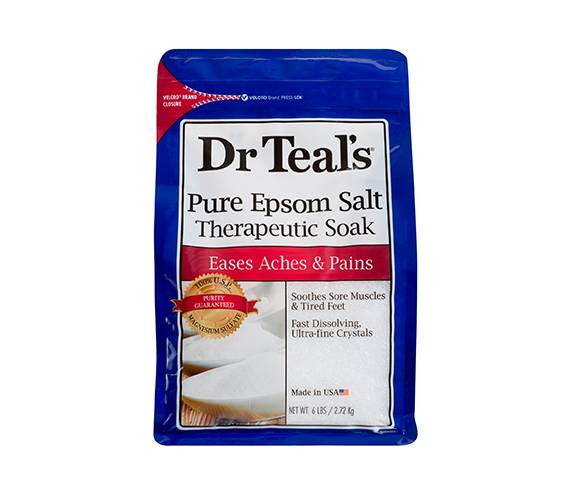Ouch! How Do I Take Care of My Ingrown Toenail at Home?
June 02, 2020If you’ve ever had an ingrown toenail, you know that they’re far from enjoyable. Your nail starts to grow a little off-center, pokes into the skin and can cause a heck of a lot of pain. We’re talking inflammation, redness and sensitivity — not fun. And while you may normally pay a visit to the salon to get your nails shaped and squared away (no pun intended), that’s not the case right now thanks to social distancing. To learn how to properly take care of an ingrown toenail at home and reduce pain, inflammation and discomfort, we turned to board-certified podiatrist Dr. Beth Gusenoff of Foot Fat Grafting in Pittsburg, Pennsylvania.
What Is an Ingrown Toenail Anyway?
Ingrown toenails are not only uncomfortable, but if gone untreated, they can cause infection in the foot. “An ingrown nail is when the nail plate grows into the skin nail wall — it can become very painful,” says Dr. Gusenoff. “If the nail plate actually breaks through the nail wall skin, it can become infected, which is called a paronychia.” She explains that while you may be more likely to get ingrown toenails due to a hereditary gene that causes the toenail to have a curved growth pattern, there are additional traumas that can increase your likelihood of getting a recurring ingrown toenail. “Trauma from shoes that are too tight can push the nail wall over the nail plate continuously, and exercising in ill-fitting sneakers when your nails are too long can cause micro-shifting of the nail, irritate the surrounding skin and provoke an ingrown nail,” she says. “Trauma due to abnormal mechanics of the foot, like a bunion, can also cause undue pressure on the nail border and cause the nail plate to dig into the nail skin wall.”
How Can I Take Care of an Ingrown Toenail at Home
If you’re trying to avoid getting an ingrown toenail, it’s important to take care when cutting or filing your toenails, especially the big toe. “If you cut your nail too short, the surrounding skin may try and hug the nail as the nail grows back,” says Dr. Gusenoff. “It may try to push the skin around the toe out of the way and can ultimately become an ingrown nail, puncture the skin and cause infection.” Try to cut your nails in a smooth, straight line and keep the length as best as possible. If you do start to notice that your nail is beginning to dig into the skin, Dr. Gusenoff says you can try to cut the corner of your toenail at an inward slant to correct the growth pattern. “Soak the foot in warm water and then try to cut the portion of the nail that is digging into the skin out at the tip,” she explains. “As it grows back, use a nail file to smooth the edge until it grows out and over the nail wall.”
While gentle filing and cutting is OK, make sure you’re not digging the nail out — self-conducted bathroom surgery can make things much worse. “If you have to continuously dig out your nails, it’s time to see a board-certified podiatrist,” says Dr. Gusenoff. “In the meantime, you can soak the foot in epsom salt, apply an antibiotic cream and keep the toenail covered with a gauze and band-aid to limit pressure and reduce inflammation.” She emphasizes that if you are experiencing continuous pain, pressure, redness, inflammation or the start of an infection, it’s important to see a doctor to address the problem before any long-term consequences ensue.

Read More:
6 Illuminating Moisturizers for Radiant Skin
What Is Sallow Skin? Your Questions, Answered
What Is Sebum and Why Does Your Skin Need It?


